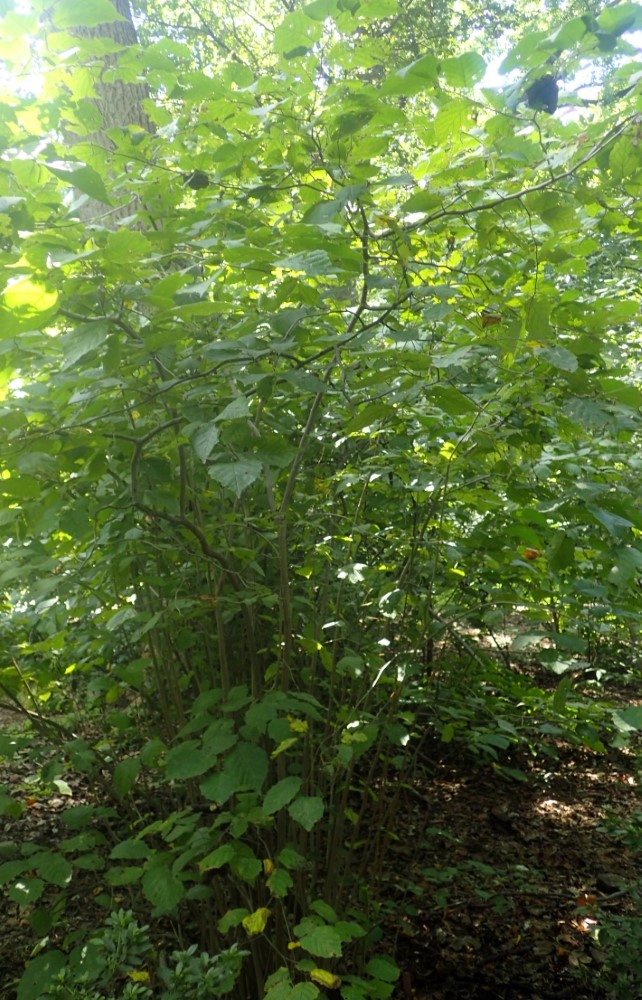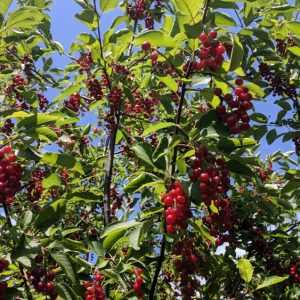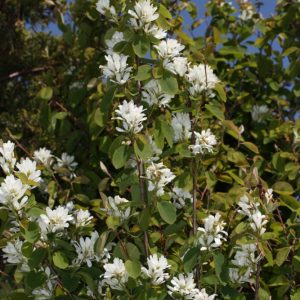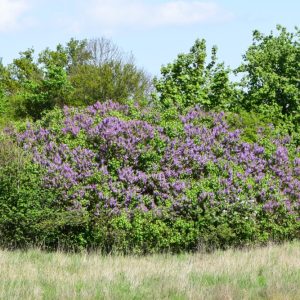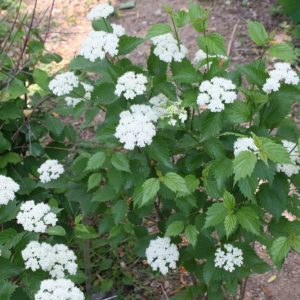Hazelnut, American
$45.00
American filbert (also commonly called hazelnut) is a Missouri native, deciduous, rounded, multi-stemmed shrub which typically grows 8-16′ tall and occurs statewide in dry or moist thickets, woodlands and wood margins, valleys, uplands and prairies. Monoecious (separate male and female flowers on the same plant). In spring, male flowers appear in showy, 2-3″ long, yellowish brown catkins and female flowers appear in small, reddish, inconspicuous catkins. Female flowers give way to small, egg-shaped, 1/2″ long, edible nuts (maturing July-August) which are encased in leafy, husk-like, ragged-edged bracts. Nuts are similar in flavor to the European filbert, and may be roasted and eaten or ground into flour, but are also commonly left for the squirrels and birds. Ovate, double-toothed, dark green leaves (3-6″ long). Fall color is quite variable, ranging from attractive combinations of orange, rose, purplish red, yellow and green to undistinguished, dull yellowish green.
American filbert (also commonly called hazelnut) is a Missouri native, deciduous, rounded, multi-stemmed shrub which typically grows 8-16′ tall and occurs statewide in dry or moist thickets, woodlands and wood margins, valleys, uplands and prairies. Monoecious (separate male and female flowers on the same plant). In spring, male flowers appear in showy, 2-3″ long, yellowish brown catkins and female flowers appear in small, reddish, inconspicuous catkins. Female flowers give way to small, egg-shaped, 1/2″ long, edible nuts (maturing July-August) which are encased in leafy, husk-like, ragged-edged bracts. Nuts are similar in flavor to the European filbert, and may be roasted and eaten or ground into flour, but are also commonly left for the squirrels and birds. Ovate, double-toothed, dark green leaves (3-6″ long). Fall color is quite variable, ranging from attractive combinations of orange, rose, purplish red, yellow and green to undistinguished, dull yellowish green.

